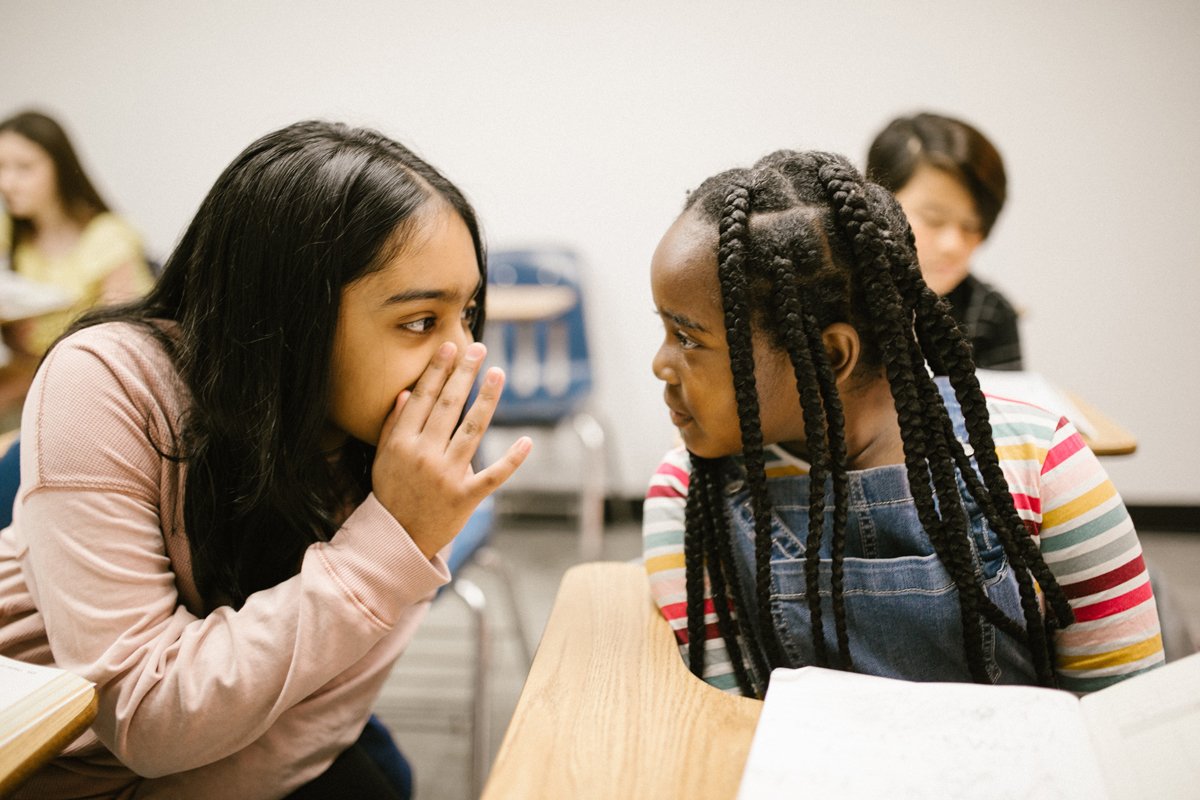Published October 2, 2023
On some level, “kids will be kids.” And that means a lot of laughing, teasing, and joking around. But when does it cross the line? When does it stop being fun? When does it turn into bullying? In honor of National Bullying Awareness Month in October, this month’s article walks you through the basics of bullying and explains exactly what you can do to help stop it.
What is Bullying?
Bullying, according to the CDC, is any type of “unwanted aggressive behavior.” It can be physical, like hitting and pushing or knocking someone’s books out of their hands. It can be verbal, like giving someone an insulting nickname. Or it can be social, like getting up from the lunch table as soon as the new kid sits down. Oftentimes, bullying includes a power dynamic, such as when the bully is older, stronger, or has their victim outnumbered.
It’s also important to note that bullying can happen anywhere. You see it in schools, around the neighborhood, at sports practice, even at home. And further, bullying isn’t just limited to children. You might have a coach that’s belittling a player or a parent who goes out of their way to make a child feel “less than.” Or an adult who’s bullying another adult in the workplace or in public.
The Consequences of Bullying
Bullying can be an isolated incident or it might be recurring. In either case, the victims have to live with the consequences long after the moment passes. According to Forbes, kids who get bullied can experience anxiety, depression, and panic attacks. They also tend to struggle socially. They take longer to recover from illnesses. They even have a higher risk of suicidal thoughts.
And the consequences of bullying can follow a child into adulthood. According to a study published in Psychological Science, “kids who were touched by bullying—either as bullies, victims, (or both)—ended up with less education and less money than those who escaped bullying altogether. Kids who encountered bullying also struggled more with social relationships.” So, bullying can have a ripple effect that lasts for an entire lifetime.
Signs That Your Child Might Be Getting Bullied
You might not always be there to spot the bullying, but you can definitely spot the signs—and stopbullying.gov helps you do exactly that. You might notice a ripped t-shirt, a damaged backpack, or a personal injury. You might notice your kids pulling back from social situations. You might hear some negative self-talk or notice poor self-esteem. Other signs include trouble sleeping, a change in appetite, or periods of low mood.
Signs That Your Kid Might Be Bullying Others
No one wants to believe that their child is a bully. But it’s important to keep our eyes wide open so we can help make it stop. Here are a few signs to watch out for (see stopbullying.gov for more info):
- Are they aggressive towards siblings, kids in the neighborhood, or pets?
- Are they confrontational, do they get in trouble a lot at school, or do their friends bully others?
- Do they come home with extra money or belongings?
- Have they developed an obsession with popularity or social status?
How You Can Help Fight Bullying
You never want your kids to get bullied. And certainly, you never want your kids to become bullies. So, here’s what every parent can do to help manage both sides of bullying:
Educate Your Kids
- Be sure to talk to your kids about the devastating impact of bullying. And if you think your kids are already getting bullied, try to teach them how to handle it. This article walks you through a few different ways to handle a bully: https://kidshealth.org/en/kids/bullies.html
Collaborate
- If you think your kids are on either side of bullying, try to make their teachers, counselors, and administrators a partner in resolving it. Some experts even recommend approaching the bully’s parents and getting their help, too—though it’s usually a good idea to get someone from the school involved first. If you do decide to talk to the other parents, todaysparent.com has some pointers on how to go about it.
Condemn Bullying
- Have a conversation about bullying with your child whenever you see it. Are they bullying one of their siblings? Is one of their friends bullying other kids? Is there a bully in the neighborhood? Do you see bullying on TV? Be sure to call it out calmly, push back gently, and use that conflict as a teaching moment.
Reward Kindness
- Go out of your way to encourage positive behavior that uplifts others. Did your kids give someone a compliment? Did they make someone feel included? Are they treating their pets with kindness? Those are behaviors that need to be encouraged.
Nip It in the Bud
- You might be able to stop bullying before it starts by managing what Lesley University calls “gateway behaviors,” like “eye rolling, prolonged staring, back turning, laughing cruelly, ignoring, and excluding.”
- Be open and direct with your child and set consequences for bad behavior. This article from the Child Mind Institute has more information.
Bullying might look exactly like the type of bullying you’d see on TV or in books. Maybe someone’s getting stuffed inside of a locker, or pushed into a wall, or called a demeaning nickname. But it can also be more subtle, like starting a rumor, excluding someone, or staring someone down. So, be sure to educate your kids about bullying, raise them to be kind, and ask for help if you need it.
Tags: bullying, bullying prevention, cyberbullying, stopbullying